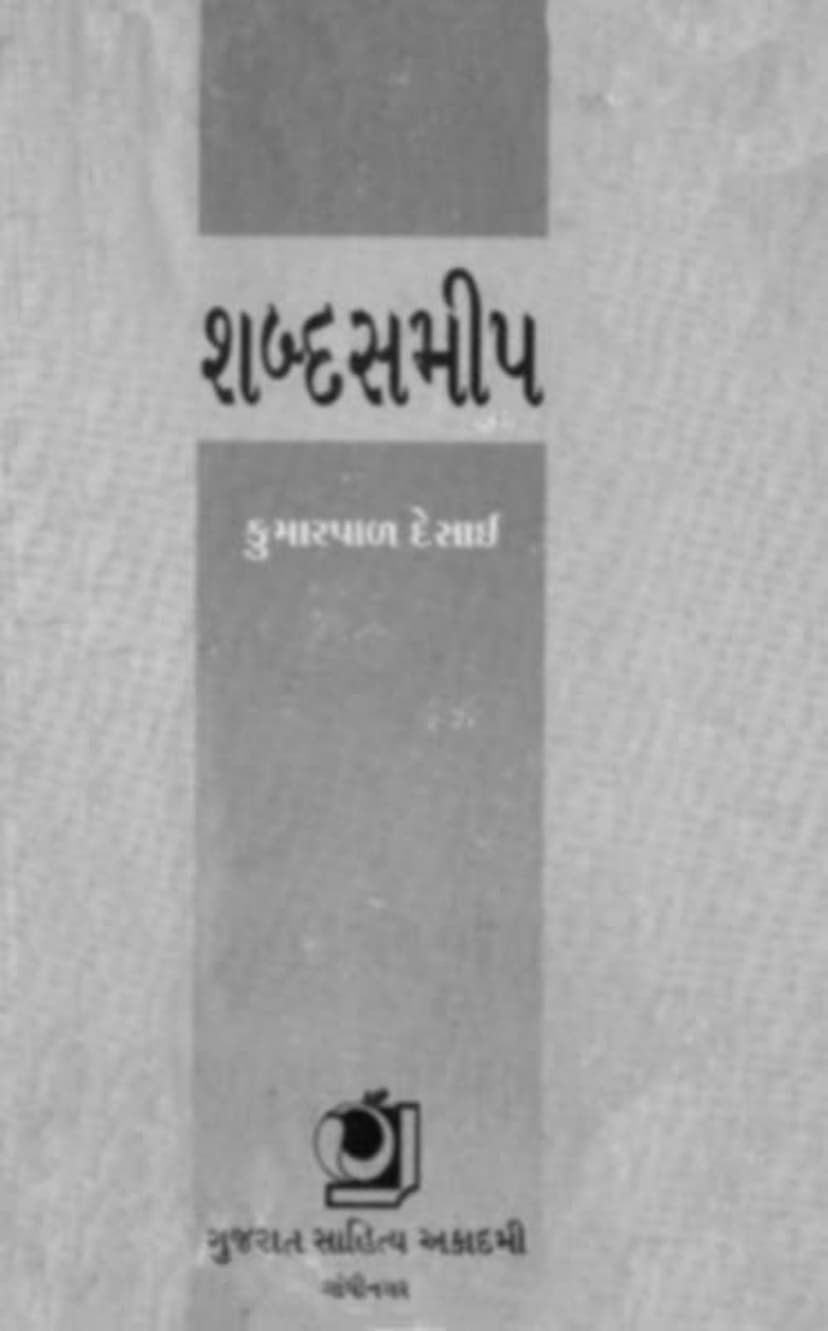Shabda Samip
Added to library: September 2, 2025

Summary
Certainly, here's a comprehensive summary of the Jain text "Shabda Samip" by Kumarpal Desai, based on the provided pages:
Shabdasamip: A Critical Exploration of Literature and Thought
"Shabda Samip" (Word Proximity), authored by Kumarpal Desai and published by Gujarat Sahitya Academy, is a collection of critical essays that delves into various facets of literature, culture, and prominent personalities. Spanning 298 pages and first published in 2002, the book is a testament to Desai's extensive literary engagement and insightful analysis. The collection showcases a broad spectrum of literary appreciation, covering medieval Jain scholars, contemporary Gujarati authors, and influential international figures.
Key Themes and Figures Explored:
The book is structured into two main sections: "Personality and Literature" (Vyaktitva ane Vaadmay) and "Essays on Various Literary and Cultural Topics."
I. Personality and Literature (Vyaktitva ane Vaadmay):
This section focuses on the life and literary contributions of significant individuals who have shaped Gujarati and broader Indian literary landscapes. The essays highlight:
-
Scholars and Thinkers:
- Acharya Hemchandracharya and his Tradition: The opening essay is a deep dive into the multifaceted genius of Acharya Hemchandracharya, often referred to as "Kalikalsarvajna" (Omniscient of the Kali Era). Desai portrays him not just as a grammatical scholar but as a pivotal figure who laid the foundation for Gujarati identity and culture. His contributions to grammar, poetry, history, and his role as a moral and political guide to kings like Siddharaja and Kumarpala are discussed. The essay emphasizes Hemchandracharya's role in establishing principles of non-violence and anekantavada (multiplicity of perspectives), drawing parallels with Mahatma Gandhi's philosophy.
- Jnana Vimal Suri: This essay examines the contributions of Jnana Vimal Suri, a Jain monk of the 18th century, highlighting his prolific output in Gujarati, Sanskrit, and Prakrit. His works are noted for their narrative, philosophical, educational, and devotional themes, showcasing his mastery of meter, rhetoric, and illustrative examples.
- Narayan Hemchandra: The essay on Narayan Hemchandra focuses on his autobiography, "Hu Pote" (I Myself), analyzing its unique blend of travelogue, experience, and memory. Desai contrasts it with other autobiographies, noting Hemchandra's raw honesty in depicting his life and his unique "vichitra-vishishta" (peculiar-distinct) personality.
- Manilal Nabhubhai: The analysis of Manilal Nabhubhai's autobiography, "Manilal Nabhubhai nu Jeevanvruttant," delves into his self-reflection, revealing his inner struggles, biases, and emotional complexities.
- Other Influential Figures: The collection also features essays on figures like Mohanalal Desai, Bhogilal Sandesara, Durlabhram Karani, Pt. Sukhlalji, Gunvantrai Acharya, Dalpatram Malvania, Harivallabh Bhayani, Manubhai Pancholi ('Darshak'), and Harshdave Dave. These essays often highlight the personal warmth and the literary service of these individuals, offering glimpses into their character and contributions.
-
Literary Critiques of International Figures:
- Anton Chekhov: Desai explores Chekhov's subtle art of capturing the strange, absurd, tedious, and natural in human experience, emphasizing the need to delve beneath the surface of words to find hidden emotions.
- Damon Runyon: The essay on Damon Runyon introduces the vibrant world of Broadway in New York through his narrative style, highlighting his ability to capture the essence of human nature in its varied shades.
- Austin Buknya: Desai discusses Buknya's play "The Bride," which portrays the conflict between tradition and the new generation within an African setting.
- Firaq Gorakhpuri and Faiz Ahmed Faiz: The collection evaluates the contributions of these Urdu poets, recognizing their ability to give voice to the unspoken pain embedded in countless human hearts, alongside themes of love and humanity.
II. Essays on Various Literary and Cultural Topics:
This section broadens the scope to discuss different literary forms and cultural aspects:
- Gujarati Prose and Language: The essay "Gujarati Gadya nu Prabhat" (The Dawn of Gujarati Prose) traces the origins and evolution of Gujarati prose, likely referencing early writers and their impact.
- Literary Journalism: The piece "Sahityik Patrakartva Vishe Thodik" (A Little About Literary Journalism) reflects on the role and significance of literary commentary and criticism in shaping literary trends and discourse.
- Children's Literature: "Gujarati Bal Sahitya: Navi Kshitijo" (Gujarati Children's Literature: New Horizons) and "Bal Vishwakosh" (Children's Encyclopedia) discuss the development, challenges, and future directions of literature for children in Gujarat, emphasizing the need for engaging and comprehensive resources.
- Character Essays and Travelogues: "Charitra-Nibandh ane Pravas-Sahitya" (Character Essays and Travel Literature) explores these genres, likely highlighting Desai's own contributions or analyzing the essence of well-crafted travelogues and biographical sketches.
- Specific Literary Works and Styles: The collection also includes analyses of specific literary works like "Shri Sisters'" by Chekhov and "Raja" (King of the Dark Chamber) by Rabindranath Tagore, examining their artistic merit and thematic depth.
Overall Significance:
"Shabda Samip" is more than just a collection of essays; it is a rich tapestry woven with Desai's deep understanding of literature, his appreciation for diverse cultural expressions, and his critical acumen. The book serves as a valuable resource for students of Gujarati literature, scholars, and anyone interested in exploring the nuances of literary criticism and the lives of those who have enriched the world of words. Desai's ability to connect medieval Jain scholars with modern literary trends, and to draw parallels between diverse cultural figures, makes this book a profound contribution to literary discourse.